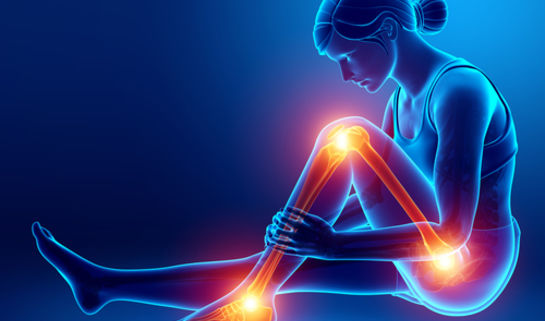Introduction:
Pain is an intricate tapestry woven into the fabric of human existence, casting its shadow over our lives in myriad ways. From the sharp sting of physical injury to the lingering ache of emotional distress, pain manifests in various forms, each with its own unique anatomy and impact. In this exploration, we delve into the depths of pain, unraveling its complex anatomy and shedding light on its profound influence on body, mind, and spirit.
The Physical Manifestations of Pain
At its most tangible level, pain manifests as physical sensations that signal distress or injury within the body. Whether it be the searing heat of a burn or the throbbing ache of a headache, physical pain demands our attention, compelling us to address its underlying causes. It is a primal and instinctual response, rooted in the nervous system’s intricate network of sensory receptors and neural pathways.
The Emotional Landscape of Pain
Beyond its physical manifestations, pain also permeates the emotional landscape of human experience. Emotional pain can manifest in a variety of ways, from the sharp pang of grief to the dull ache of loneliness. It is a deeply personal and subjective experience, shaped by our individual histories, relationships, and perceptions. Emotional pain can be just as debilitating as physical pain, affecting our mood, behavior, and overall well-being.
The Psychological Dimensions of Pain
In addition to its physical and emotional dimensions, pain also exerts a powerful influence on the psyche. Psychological pain can arise from trauma, loss, or unresolved emotional conflicts, leaving lasting scars on the mind and spirit. It can manifest as anxiety, depression, or other mental health disorders, further complicating the experience of pain and amplifying its impact on our lives.
The Interplay of Body, Mind, and Spirit
While the physical, emotional, and psychological dimensions of pain may seem distinct, they are deeply interconnected, each influencing and amplifying the other in a complex interplay of body, mind, and spirit. Chronic pain conditions, such as fibromyalgia or migraines, exemplify this intersection, blurring the boundaries between physical sensations, emotional distress, and psychological anguish. Similarly, the experience of trauma can manifest as both physical symptoms and emotional or psychological pain, leaving individuals trapped in a cycle of suffering that affects every aspect of their being.
Coping Mechanisms and Strategies
In the face of pain, humans have developed a myriad of coping mechanisms and strategies to alleviate suffering and restore a sense of well-being. From the use of pain medications and physical therapies to mindfulness practices and psychotherapy, the arsenal of tools available for managing pain is vast and diverse. However, the effectiveness of these interventions can vary widely depending on the individual and the nature of their pain.
Holistic Approaches to Pain Management
While conventional treatments play a crucial role in pain management, there is also growing interest in holistic approaches that address the underlying causes of pain and promote overall well-being. Integrative modalities such as acupuncture, massage therapy, yoga, and meditation offer alternative pathways towards healing, harnessing the body’s innate capacity for self-regulation and restoration. By fostering a sense of connection between mind, body, and spirit, these holistic approaches empower individuals to take an active role in their healing journey.
Lifestyle Factors and Pain Management
Beyond medical interventions and complementary therapies, lifestyle factors also play a significant role in pain management. Nutrition, exercise, sleep, and stress management all exert profound influences on our physical and emotional well-being, influencing the perception and experience of pain. By adopting healthy habits and making lifestyle modifications, individuals can optimize their body’s resilience and enhance its ability to cope with pain.
The Role of Mindfulness and Mind-Body Practices
Central to many holistic approaches to pain management is the cultivation of mindfulness – the practice of non-judgmental awareness of the present moment. Mindfulness-based interventions, such as mindfulness-based stress reduction (MBSR) and mindfulness-based cognitive therapy (MBCT), have been shown to be effective in reducing pain severity and improving quality of life for individuals with chronic pain conditions. By fostering a greater sense of acceptance and equanimity, mindfulness empowers individuals to relate to their pain with greater ease and compassion.
The Power of Connection and Support
In the journey towards healing, the importance of connection and support cannot be overstated. Whether it be through the empathic presence of a loved one, the camaraderie of a support group, or the guidance of a trusted therapist, human connection serves as a powerful balm for the wounds of pain. By sharing our stories, validating our experiences, and offering a listening ear, we create spaces of healing and belonging where sorrows can be soothed and burdens shared.
Embracing the Complexity of Pain
In the shadow of hurt, pain reveals itself as a complex and multifaceted phenomenon that touches every aspect of human existence. From its physical manifestations to its emotional and psychological dimensions, pain leaves no aspect of our being untouched. Yet, within its depths lies the potential for healing and growth, a transformative alchemy that empowers individuals to navigate the depths of their suffering with courage, resilience, and grace. By embracing the complexity of pain and honoring its profound influence on body, mind, and spirit, we open ourselves to the possibility of a life rich in meaning, purpose, and fulfillment.

